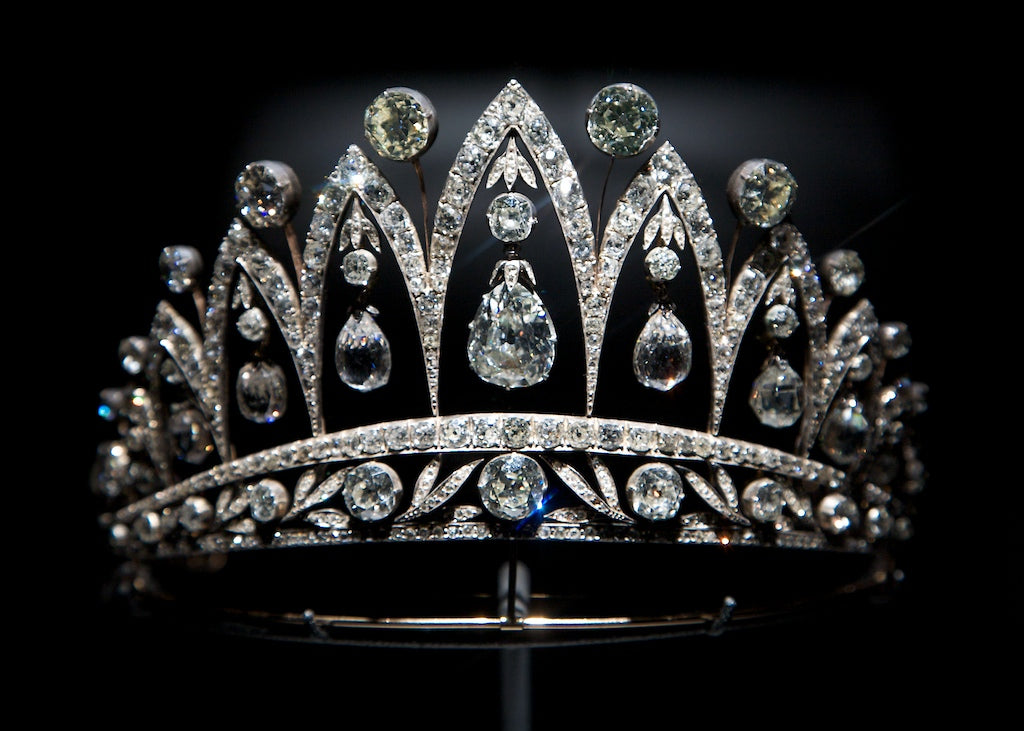
Pendeloque Cut
The pendeloque is a unique cut that is rarely seen today. While the cut was allegedly invented in the 1500s by Lodewyk van Bercken (although he probably never existed), it wasn’t called a pendeloque at the time. It was simply known as a pear shape diamond.
The term pendeloque was introduced a couple of centuries later in France to describe pendants, but it became to be known as a pear shape stone which is much fatter than a traditional pear shape with facets similar to a briolette cut. The term pendeloque officially refers to a pear shape stone, although sometimes it will also be used to describe an oval diamond.
Faithful to the name, the most famous example of a pendeloque diamond of course comes from France: the Napoleon Diamond Necklace. Created in 1811 for his second wife, Marie-Louise, the necklace features 10 briolette diamonds and 9 pendeloque diamonds (5 pear and 4 oval) to go along with 28 old mine cut diamonds and 187 additional accent diamonds. The total diamond weight in the necklace is estimated to be 263 carats, with the largest diamonds estimated to weigh approximately 10.40 ct.
Of course, many historic diamonds usually referred to as pear shapes could also be considered pendeloque cuts, including the 530.2ct Cullinan I aka the “Great Star of Africa”.


 The Napoleon Diamond Necklace featuring 10 briolette diamonds and 9 pendeloque diamonds (5 pear and 4 oval)
The Napoleon Diamond Necklace featuring 10 briolette diamonds and 9 pendeloque diamonds (5 pear and 4 oval)